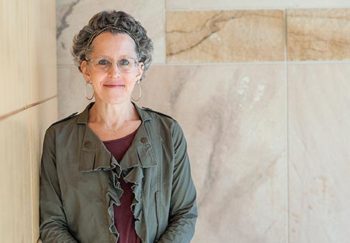My good friend died of breast cancer. So I worry about getting it. Of course, this means I keep up with my mammograms. But if you're at high risk for breast cancer, you may want to go beyond regular screenings. You can choose to have both of your cancer-free breasts removed. But is this solution a sure thing? What are the pros and cons of preventive mastectomy?
Personal Choice
A decade ago, celebrity Angelina Jolie pushed this surgery into the spotlight. She shared publicly about her choice to have both breasts removed. This is known as a bilateral (both breasts) prophylactic mastectomy.
Jolie’s mother battled breast cancer for 10 years and died from it at 56. Jolie inherited the BRCA1 gene mutation. Her decision to remove her breasts falls in line with general medical guidance.
“We do recommend bilateral prophylactic mastectomy for women with BRCA mutations because these women tend to have more aggressive breast cancers,” Alison Goldenberg, MD, confirms. She’s a fellowship-trained breast surgeon who recently joined UVA Health and sees patients at Haymarket Medical Center in Northern Virginia.
But that’s not the path everyone takes. “I have patients with BRCA mutations who don't want bilateral mastectomies,” Goldenberg says. “And that's okay. It's a personal decision.”
Surgery is Not the Only Option
Goldenberg explains that good alternatives to surgery exist, thanks to advanced technology.
“I most often recommend breast conservation and screening because our screening tests are so good these days,” she says. “If you’re doing a yearly MRI and a yearly 3D screening mammogram, you're going to pick up pretty much every cancer at an early curable stage.”
Along with Goldenberg, we spoke with Martha Thomas, MS, a genetic counselor with the UVA Health High-Risk Breast Cancer Program. Both experts welcome conversations to help guide someone on how best to address their worries about breast cancer.
Their insights help us scratch the surface on the pros and cons of preventive mastectomy.
Preventive Mastectomy Pros
Surgery greatly reduces your risk of developing breast cancer.
Preventive mastectomies reduce a person’s risk of breast cancer by about 90%. Having both breasts removed can bring a huge sense of relief.
“For someone who constantly worries about getting breast cancer, prophylactic mastectomies can psychologically be positive,” Thomas says.
You won’t need a breast screening anymore.
Breast screenings are not recommended after a bilateral mastectomy. This, too, can bring relief for women who’ve had the stress of repeated call backs and biopsies after mammograms or MRI screenings.
Your chest can still look beautiful.
You have options. It’s easy to find pictures of women who share pictures of their bare chest after a cancer-prevention surgery. Some choose to get intricate tattoos where their breasts used to be.
Surgical techniques have improved greatly. Surgeons can hide incisions and reconstruct breasts using a person’s own nipples and other tissue. Breast implants have also improved.
It's important to know, though, that a double mastectomy isn’t done for cosmetic reasons. It’s done to reduce your risk of cancer.
“The point of the surgery is to remove as much breast tissue as possible,” Thomas says. “Breast tissue goes up by your collarbone and under your armpits. It’s a much different surgery than breast augmentation. But certainly, cancer surgeons work with plastic surgeons to try to get a desirable cosmetic outcome.”
Preventive Mastectomy Cons
Surgery doesn't eliminate your risk of breast cancer.
Your risk for getting breast cancer won’t be zero after a preventive mastectomy. You’ll still have a small chance of developing cancer. That’s because it’s not possible to remove all breast tissue during a mastectomy.
It’s a major surgery with lifelong side effects.
Some women mistakenly think a preventive mastectomy is like getting breast implants.
“Mastectomies are big surgeries,” Thomas says. “Sometimes people have this fantasy notion that you go to sleep with your breast tissue. And you wake up with silicone breasts and you go on your way. In reality, it can be a multi-surgery, multi-step process that can be physically and emotionally exhausting.”
You won’t be able to breastfeed after surgery. Or pick up a young child for weeks after surgery.
A major con of preventive mastectomies is pain, numbness, and lack of mobility over the long run. Active women are often surprised how much it impacts their ability to play tennis or do yoga, Goldenberg says.
Facing Breast Cancer?
Find the right treatment for you.
Your body will be different.
Thomas always tries to help women prepare for a body that won’t feel and look like their former self.
“No matter what fantastic surgeons you have, your body is going to be different,” she says. “And even if your breasts somehow look identical to what they did before, certainly the sensation in your breast isn’t going to be the same.” And that’s hard to prepare for.
As with most decisions like this, the pros and cons require thoughtful consideration and a conversation with your provider. “The conversations we have about prophylactic mastectomy are very specific to each patient,” Goldenberg says.


